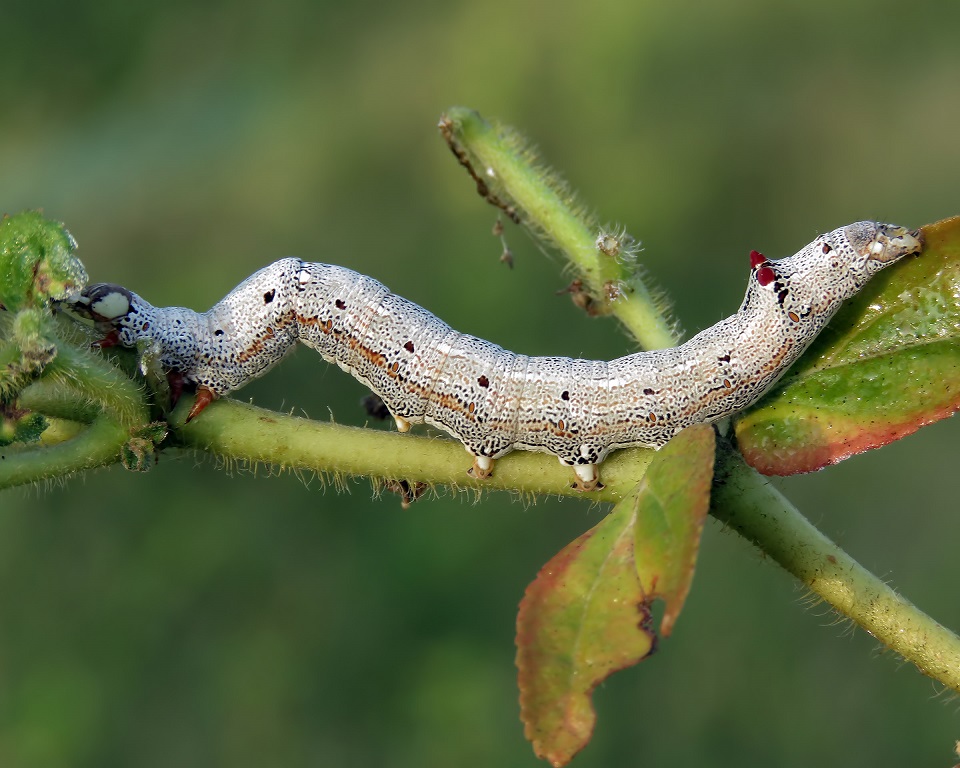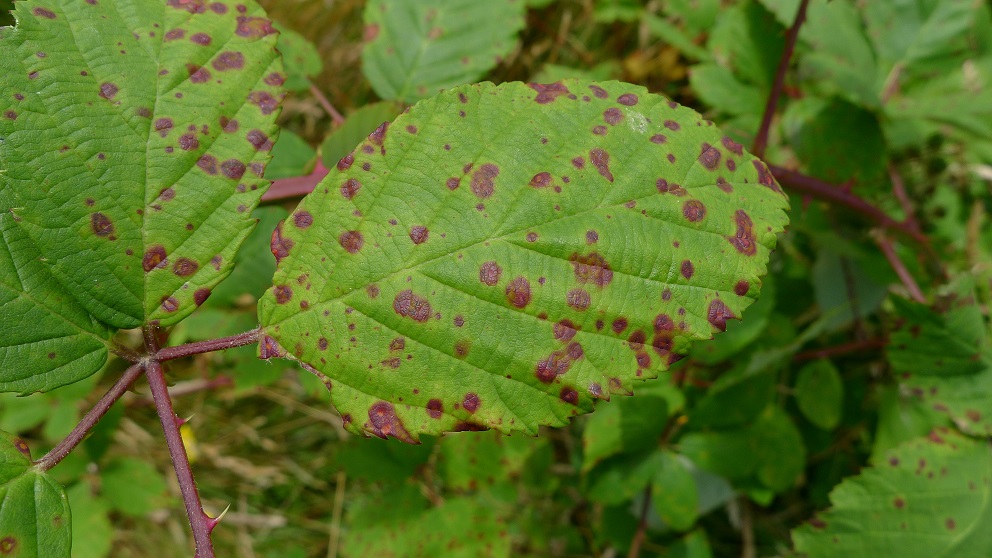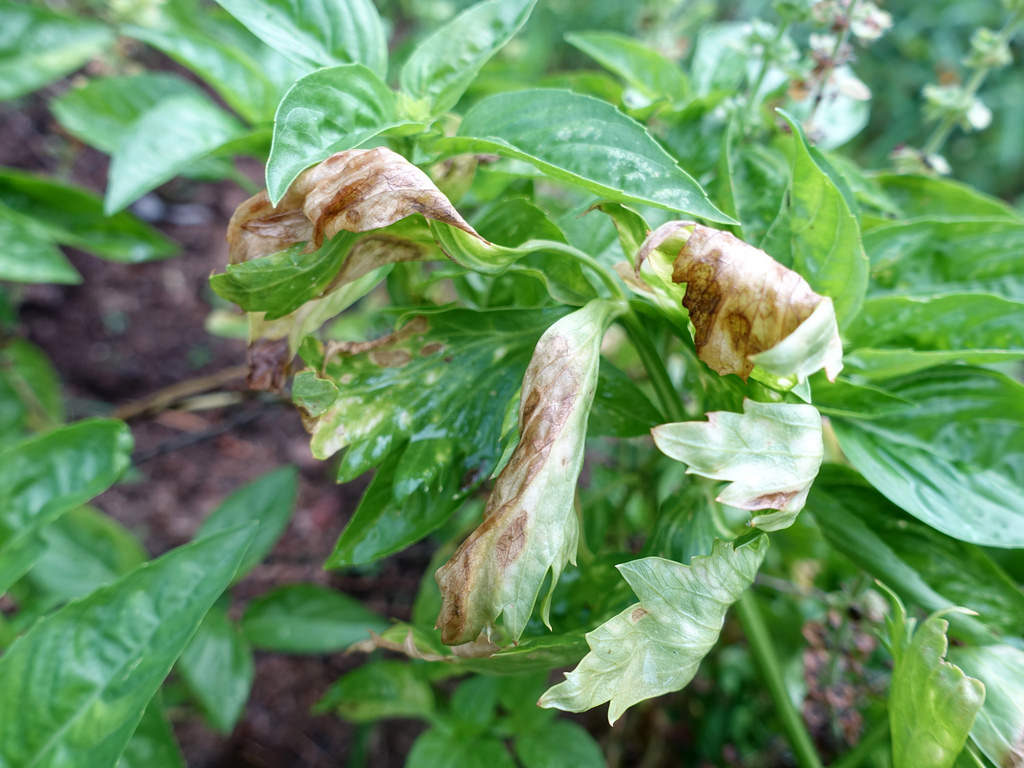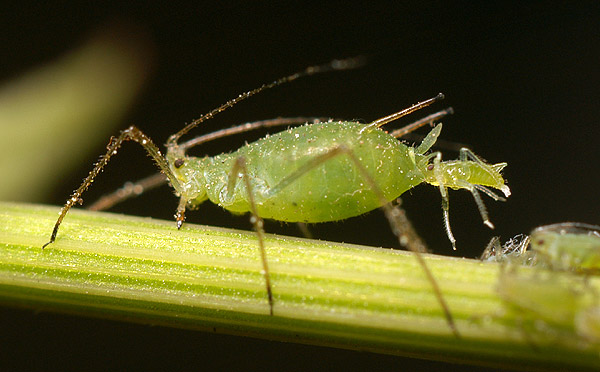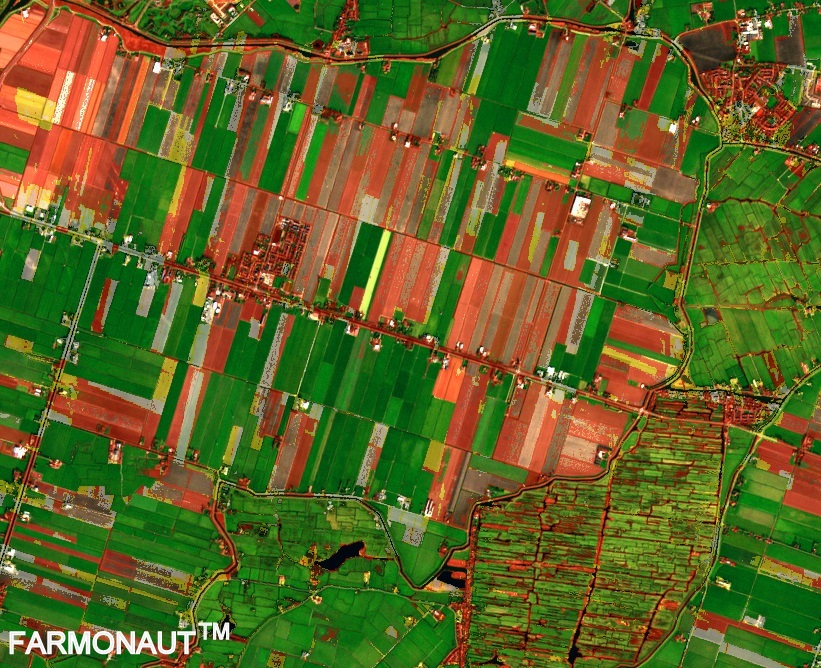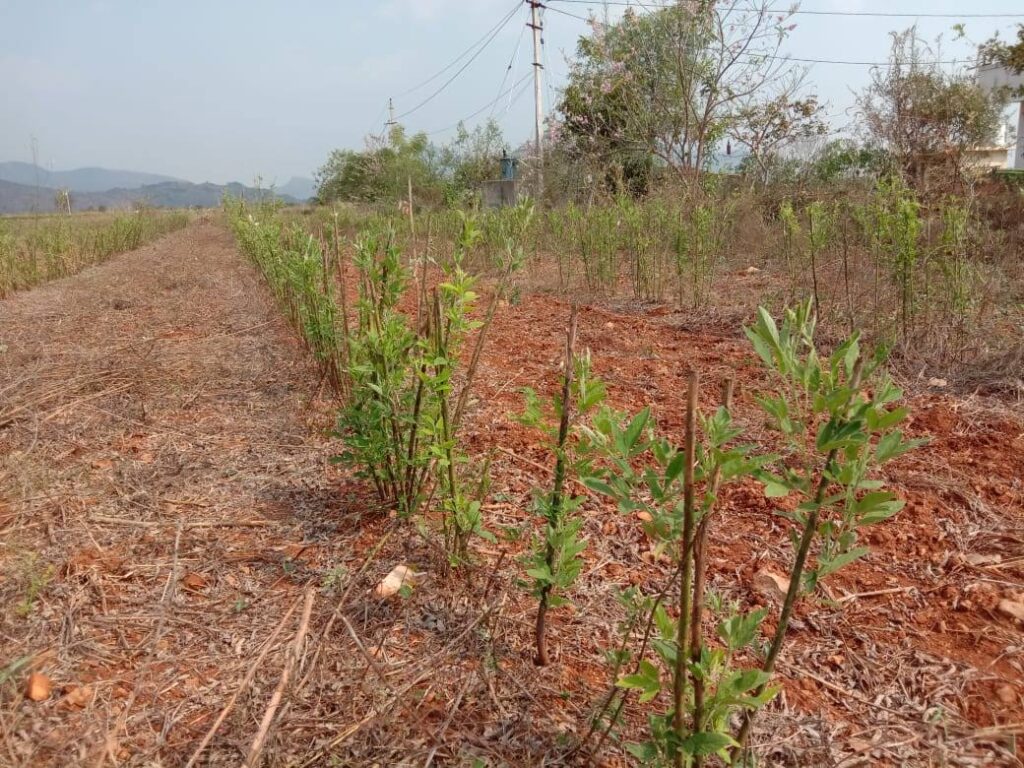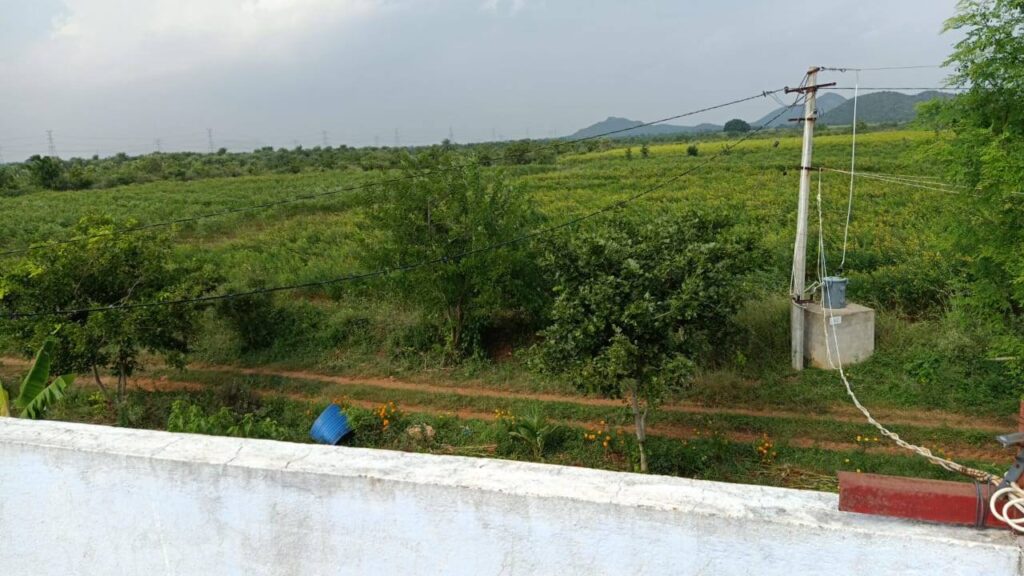Understanding and Managing Black Bugs on Plants: A Comprehensive Guide
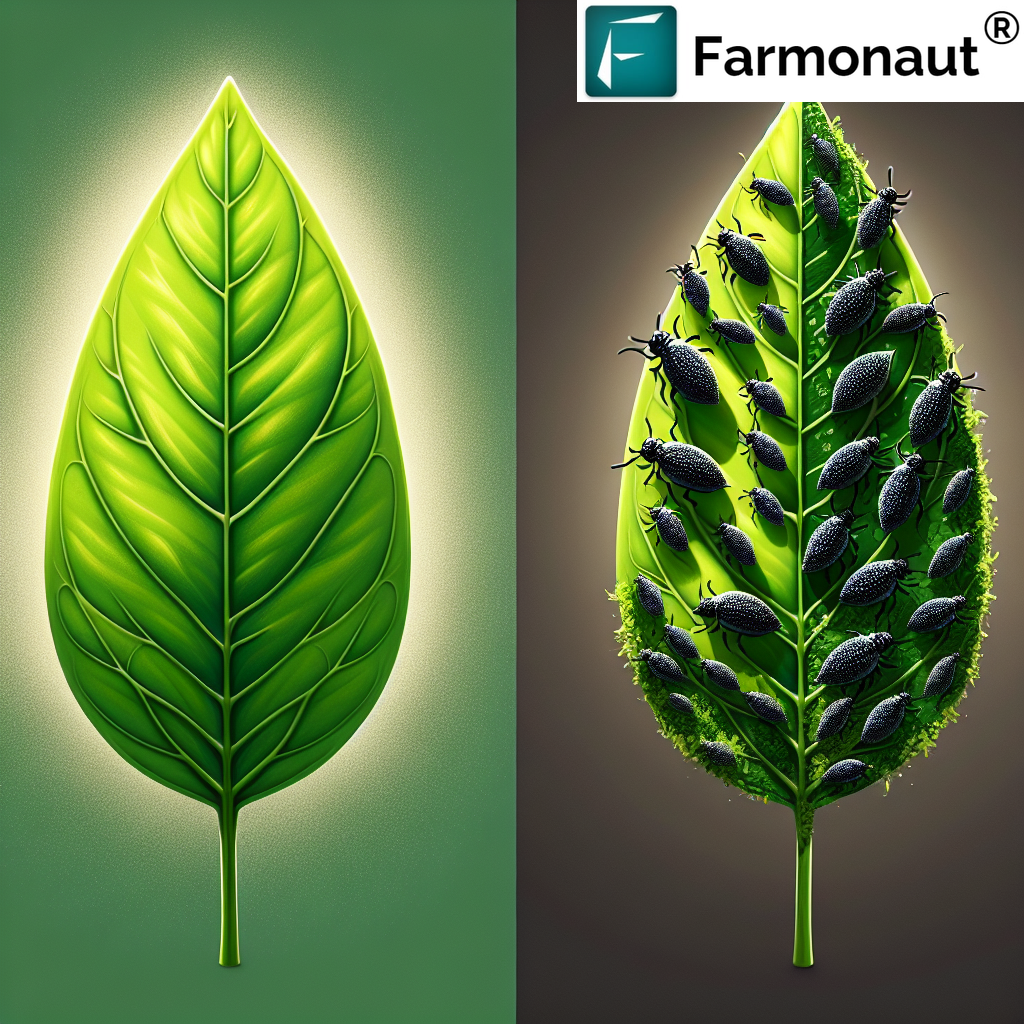
As agricultural technology experts at Farmonaut, we understand the challenges that farmers face when it comes to pest management. One of the most common issues that plague crops is the presence of black bugs on plants. These tiny invaders can cause significant damage to your crops if left unchecked. In this comprehensive guide, we’ll explore everything you need to know about identifying, preventing, and controlling these pests, with a focus on black aphids – one of the most prevalent black insects on plants.
Table of Contents
- Introduction to Black Bugs on Plants
- Identifying Black Aphids
- The Impact of Black Bugs on Plant Health
- Prevention Strategies
- Natural Control Methods
- Chemical Control Options
- Integrated Pest Management (IPM)
- How Farmonaut’s Technology Aids in Pest Management
- Frequently Asked Questions (FAQ)
1. Introduction to Black Bugs on Plants
When we talk about black bugs on plants, we’re often referring to a variety of pests that can infest and damage crops. These can include aphids, flea beetles, whiteflies, and various other species. However, one of the most common and destructive pests in this category is the black aphid.
Black aphids, scientifically known as Aphis fabae or Toxoptera aurantii, depending on the species, are small, soft-bodied insects that feed on plant sap. They are a significant concern for farmers and gardeners worldwide due to their rapid reproduction rate and the extensive damage they can cause to a wide range of plants.
2. Identifying Black Aphids
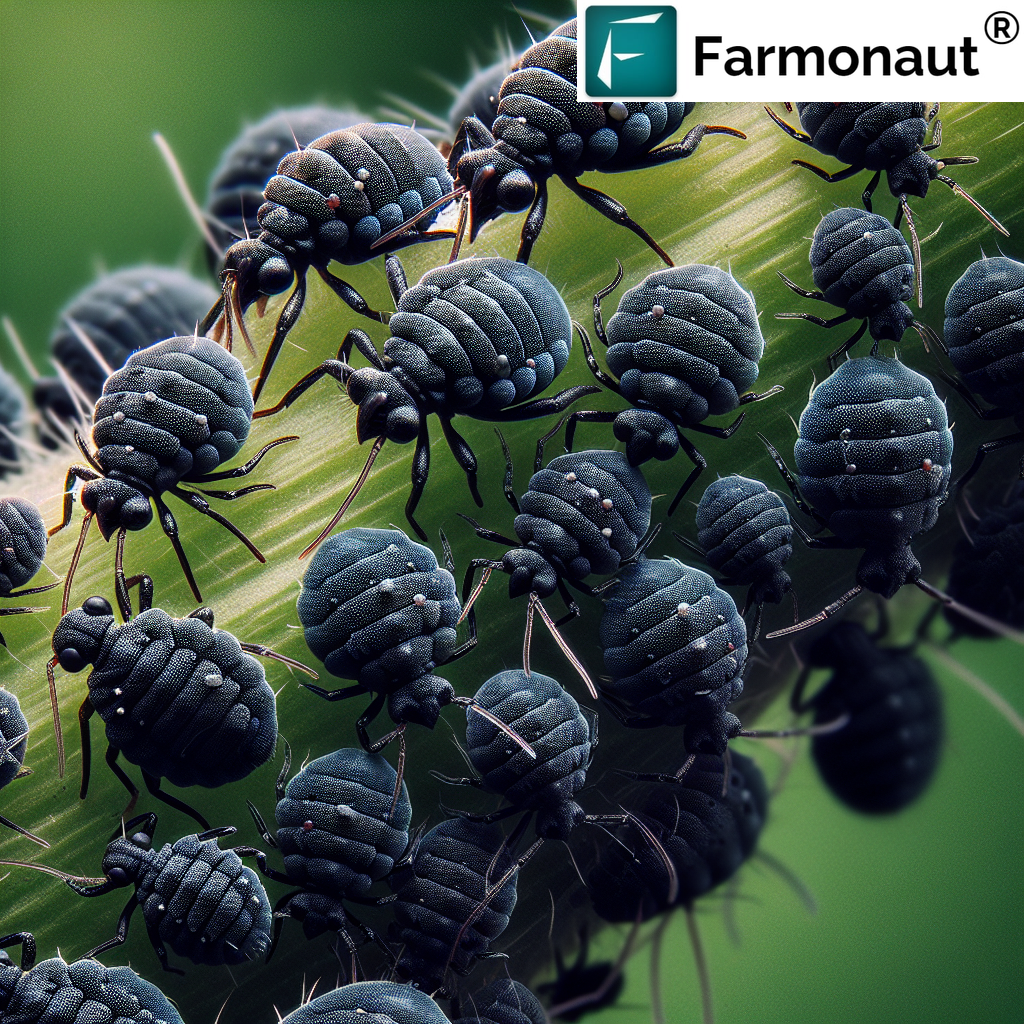
Recognizing black aphids is crucial for effective pest management. Here are some key characteristics to look out for:
- Size: Black aphids are typically 1-2 mm in length, making them visible to the naked eye but small enough to be easily overlooked.
- Color: As the name suggests, these aphids are predominantly black, although some species may have a deep green or brown coloration that appears black from a distance.
- Body Shape: Aphids have pear-shaped bodies with long antennae and two tube-like structures called cornicles protruding from their rear.
- Behavior: They tend to cluster in large groups on the undersides of leaves, stems, and new growth.
- Winged vs. Wingless: Most aphids in a colony are wingless, but some develop wings to migrate to new plants when populations become too dense.
A picture of aphids on plants can be incredibly helpful for identification. Farmers and gardeners should familiarize themselves with the appearance of these pests to spot infestations early.
3. The Impact of Black Bugs on Plant Health
The presence of black bugs, particularly black aphids, can have severe consequences for plant health and crop yield. Understanding these impacts is crucial for appreciating the importance of effective pest management:
- Nutrient Depletion: Aphids feed by sucking sap from plants, which deprives the plant of essential nutrients and water.
- Stunted Growth: Heavily infested plants often exhibit stunted growth, curled or distorted leaves, and reduced vigor.
- Honeydew Production: Aphids excrete a sticky substance called honeydew, which can attract ants and promote the growth of sooty mold on leaves.
- Virus Transmission: Many species of aphids are vectors for plant viruses, potentially spreading diseases throughout a crop.
- Yield Reduction: Severe infestations can significantly reduce crop yields and even kill plants if left unchecked.
4. Prevention Strategies
At Farmonaut, we believe that prevention is always better than cure. Here are some strategies we recommend to prevent black bug infestations:
- Crop Rotation: Regularly rotating crops can disrupt pest life cycles and reduce the likelihood of infestation.
- Companion Planting: Growing plants that repel aphids (like marigolds or nasturtiums) alongside susceptible crops can help deter these pests.
- Healthy Soil: Maintaining healthy, well-balanced soil promotes strong plant growth, making crops more resistant to pest attacks.
- Regular Monitoring: Consistently checking plants for signs of infestation allows for early detection and intervention.
- Proper Spacing: Ensuring adequate spacing between plants improves air circulation and makes it harder for pests to spread.
- Clean Cultivation: Removing plant debris and weeds eliminates potential hiding spots and overwintering sites for pests.
By implementing these preventive measures, farmers can significantly reduce the risk of black bug infestations and minimize the need for more intensive control methods.
5. Natural Control Methods
When it comes to managing black bugs on plants, we at Farmonaut always advocate for starting with natural control methods. These approaches are environmentally friendly and can be highly effective, especially when implemented early in an infestation:
5.1 Biological Control
Introducing natural predators of black aphids can help keep populations in check:
- Ladybugs: Both adult ladybugs and their larvae are voracious aphid eaters.
- Lacewings: Green lacewing larvae, known as “aphid lions,” can consume up to 200 aphids per week.
- Parasitic Wasps: These tiny wasps lay their eggs inside aphids, effectively controlling populations.
- Hoverflies: The larvae of these flies are excellent aphid predators.
5.2 Physical Removal
For small infestations or in home gardens, physical removal can be effective:
- Water Spray: A strong jet of water can dislodge aphids from plants.
- Hand Removal: Gently squishing or removing aphids by hand can control small populations.
- Pruning: Removing heavily infested parts of the plant can prevent the spread of aphids.
5.3 Organic Sprays
Several organic solutions can be effective against black aphids:
- Neem Oil: This natural insecticide disrupts the feeding and breeding of aphids.
- Insecticidal Soaps: These soaps suffocate soft-bodied insects like aphids.
- Garlic or Chili Pepper Spray: Homemade sprays can repel aphids and other pests.
6. Chemical Control Options
While we always recommend starting with natural methods, sometimes chemical control may be necessary for severe infestations. If you decide to use chemical pesticides, consider the following:
- Systemic Insecticides: These are absorbed by the plant and kill aphids when they feed on the sap.
- Contact Insecticides: These kill aphids on contact but may need to be reapplied more frequently.
- Selective Insecticides: These target specific pests, minimizing harm to beneficial insects.
Important: Always follow label instructions carefully and consider the potential impact on beneficial insects and the environment. At Farmonaut, we recommend consulting with agricultural experts or using our AI advisory system, Jeevn AI, for personalized advice on chemical control methods.
7. Integrated Pest Management (IPM)
At Farmonaut, we strongly advocate for Integrated Pest Management (IPM) as the most effective approach to controlling black bugs on plants. IPM combines various control methods to manage pest populations while minimizing environmental impact and promoting long-term crop health.
Key Components of IPM:
- Monitoring: Regular inspection of crops to detect pest problems early.
- Prevention: Implementing cultural practices that discourage pest infestations.
- Identification: Correctly identifying pests to choose the most effective control methods.
- Action Thresholds: Determining the point at which pest populations require control action.
- Combination of Methods: Using a mix of biological, cultural, physical, and chemical control methods as needed.
- Evaluation: Assessing the effectiveness of control measures and adjusting strategies accordingly.
By adopting an IPM approach, farmers can effectively manage black aphids and other pests while promoting a healthier, more sustainable agricultural ecosystem.
8. How Farmonaut’s Technology Aids in Pest Management
At Farmonaut, we’re committed to leveraging cutting-edge technology to support farmers in their pest management efforts. Our satellite-based crop monitoring system and AI-powered advisory tools offer several advantages in managing black bugs on plants:
8.1 Early Detection
Our satellite imagery can detect changes in crop health that may indicate pest infestations, allowing for early intervention. By analyzing multispectral data, we can identify stressed areas of the field that might be suffering from aphid attacks or other pest problems.
8.2 Precision Application
With our detailed field maps, farmers can target their pest control efforts more precisely. This not only improves the effectiveness of treatments but also reduces unnecessary pesticide use, saving costs and minimizing environmental impact.
8.3 AI-Powered Recommendations
Our Jeevn AI advisory system analyzes satellite data, weather patterns, and pest life cycles to provide personalized recommendations for pest management. This includes optimal timing for preventive measures and suggestions for the most effective control methods based on the specific pest and crop conditions.
8.4 Historical Data Analysis
By maintaining a historical record of field conditions and pest occurrences, our system helps farmers identify patterns and trends. This information is invaluable for developing long-term pest management strategies and improving crop rotation plans.
8.5 Real-Time Monitoring
Farmers can access up-to-date information on their crops’ health through our mobile app, allowing them to respond quickly to emerging pest issues. This real-time monitoring capability is crucial for effective IPM implementation.
| Feature | Farmonaut Satellite System | Drone-based Monitoring | IoT-based Monitoring |
|---|---|---|---|
| Coverage Area | Large scale (thousands of hectares) | Medium scale (hundreds of hectares) | Small scale (tens of hectares) |
| Frequency of Data Collection | Daily to weekly | On-demand (requires manual flight) | Continuous |
| Initial Setup Cost | Low | High (drone purchase required) | Medium to High (sensors needed) |
| Operational Complexity | Low (automated) | High (skilled operator required) | Medium (maintenance required) |
| Weather Dependencies | Moderate (cloud cover can affect imagery) | High (cannot fly in poor weather) | Low |
| Data Analysis | Advanced AI-powered analysis | Requires separate analysis tools | Often limited to basic metrics |
| Scalability | Highly scalable | Limited by flight time and regulations | Requires additional hardware for scaling |
To learn more about how Farmonaut can help you manage pests and improve your crop health, visit our app page or explore our API services for developers.
9. Frequently Asked Questions (FAQ)
Q1: How can I tell if the black bugs on my plants are aphids?
A: Black aphids are small (1-2 mm), pear-shaped insects that cluster on the undersides of leaves and new growth. They have long antennae and two tube-like structures (cornicles) on their rear. If you’re unsure, you can send a picture of aphids on plants to our Farmonaut app for identification.
Q2: Are black aphids harmful to all plants?
A: While black aphids can infest a wide range of plants, they tend to prefer certain species. Common targets include beans, peppers, tomatoes, and various ornamental plants. However, their rapid reproduction means they can become a problem for many crop types if left unchecked.
Q3: How quickly can a black aphid infestation spread?
A: Black aphids reproduce extremely quickly. A single aphid can produce up to 80 offspring in a week, and these offspring can start reproducing within 7-10 days. This rapid reproduction rate means infestations can spread very quickly if not controlled.
Q4: Can black aphids survive winter?
A: Many species of black aphids lay eggs that can overwinter on plant material. In milder climates, adult aphids may survive on winter crops or weeds. This is why clean cultivation and crop rotation are important prevention strategies.
Q5: How does Farmonaut’s satellite monitoring help with aphid control?
A: Our satellite monitoring system detects changes in plant health that may indicate pest infestations. By providing early warning of potential problems, we help farmers take action before aphid populations reach damaging levels. Our AI system also provides tailored advice on the most effective control methods based on the specific situation.
Q6: Are there any natural predators that specifically target black aphids?
A: Yes, several natural predators feed on black aphids. Ladybugs, lacewings, and hoverfly larvae are particularly effective. Parasitic wasps also play a crucial role in controlling aphid populations by laying their eggs inside the aphids.
Q7: How often should I monitor my plants for black bugs?
A: We recommend checking your plants at least once a week during the growing season. However, during periods of rapid growth or when conditions are favorable for pest development, more frequent monitoring may be necessary. Our Farmonaut app can provide customized monitoring schedules based on your specific crop and local conditions.
Q8: Can black aphids transmit diseases to my plants?
A: Yes, aphids are known vectors for numerous plant viruses. They can transmit these viruses as they move from plant to plant, feeding on sap. This is one of the reasons why controlling aphid populations is so important for overall plant health.
Q9: Is it possible to completely eradicate black aphids from my farm?
A: While complete eradication is challenging due to the aphids’ rapid reproduction rate and ability to reinfest from surrounding areas, implementing a comprehensive IPM strategy can effectively keep populations under control. The goal is to manage aphid numbers below the economic threshold rather than attempting total eradication.
Q10: How can I get started with Farmonaut’s pest management tools?
A: You can download our app from the Google Play Store or the Apple App Store. For more advanced features and API access, check out our developer documentation.
Conclusion
Managing black bugs on plants, particularly black aphids, requires a comprehensive approach that combines prevention, monitoring, and various control methods. By leveraging advanced technologies like Farmonaut’s satellite monitoring and AI advisory systems, farmers can stay one step ahead of pest infestations, protecting their crops and maximizing yields.
Remember, successful pest management is an ongoing process that requires vigilance and adaptability. By staying informed and utilizing the right tools, you can effectively protect your plants from these tiny but troublesome invaders.
Ready to take your pest management to the next level? Subscribe to Farmonaut today and gain access to our cutting-edge agricultural technology solutions:
With Farmonaut, you’re not just fighting pests – you’re revolutionizing your entire approach to farm management. Join us in shaping the future of agriculture!


